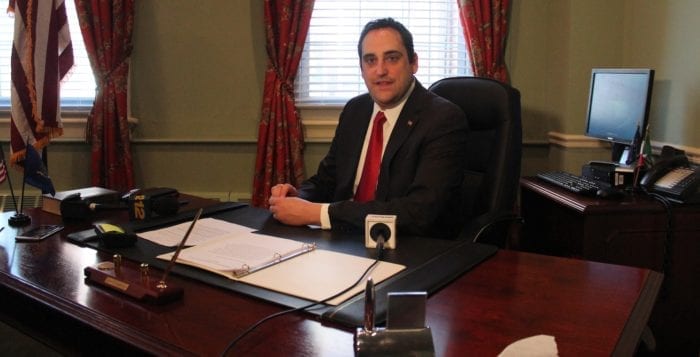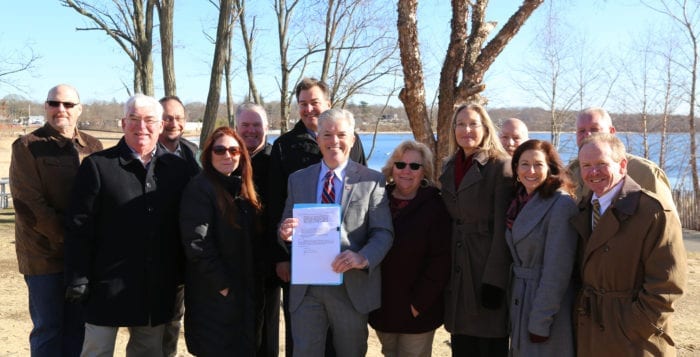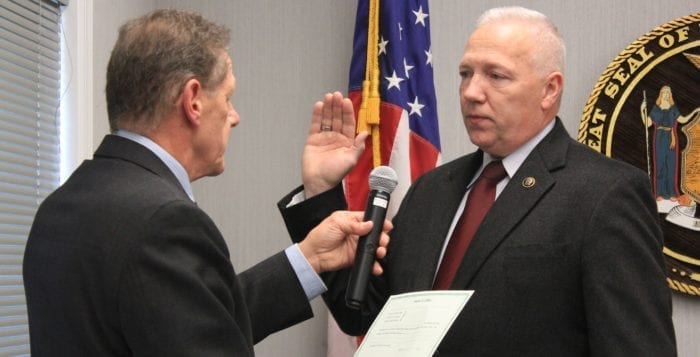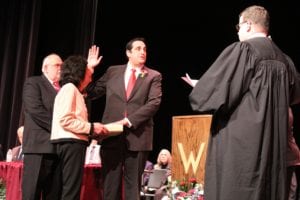A request by Huntington’s new town board to have the state comptroller review the town’s finances was met with criticism.
Huntington Town Board voted 4-1 at its Jan. 3 meeting to go forward with a request to New York Comptroller Thomas DiNapoli (D) to conduct a review and audit of the town’s finances, policies and procedures. Councilman Mark Cuthbertson (D) was the sole vote against the measure.
“I just think this is a ridiculous waste of taxpayer money,” he said. “I think it’s a shot at the prior administration that had healthy financials and won a number of awards each year for the records we keep and our finances.”
In December, the Town of Huntington received its 17th consecutive certificate of achievement for excellence in financial reporting from the Government Finance Officers Association. The nonprofit professional association serving nearly 18,000 government financial professionals across North America, had reviewed the town’s comprehensive financial report for the year ending Dec. 31, 2016.
“I just think this is a ridiculous waste of taxpayer money.”
— Mark Cuthbertson
Councilman Eugene Cook (R), who sponsored the audit resolution, denied that it was a strike against former Supervisor Frank Petrone (D) and his practices, but rather a way to provide for a fresh start.
“Any business owner knows if they are buying a new business and going into a new business, they want to check all the records,” he said. “It’s as simple as that.”
Cuthbertson suggested given the lengthy time and funds it would require for the state to audit the town, the new administration and town officials would be better served by studying the town’s yearly internal audits performed by an outside contractor.
Cook sponsored a similar resolution in 2012 calling for state review, but it failed to gain the board’s approval. Petrone then offered a revised resolution that was approved, and ultimately resulted in a 2013 audit conducted by the state comptroller.
The 2013 audit report, which reviewed the town’s finances from Jan. 1, 2011, to May 31, 2012, found issues with the town’s ability to track overtime hours and paid leave for town employees adequately.
“We found that the town may have higher payroll costs than necessary because town officials did not monitor and control these costs,” states the 2013 audit’s summary findings.
“Any business owner knows if they are buying a new business and going into a new business, they want to check all the records.”
— Gene Cook
The state comptroller’s office also found the town was awarding contracts to attorneys without going through the standard bidding process and then paid without providing detailed invoices in some cases. Recommendations were made and discussed between state and Huntington officials on corrective actions to be made.
“While serving as an affirmation of the policies that have helped Huntington maintain its AAA bond rating, we also appreciate the audit’s insight on how to make Huntington’s government operate even more efficiently,” Petrone had said in his response to the 2013 audit. “We will consider changes to implement the recommendations we have not already put into place.”
Councilwoman Joan Cergol (D), who worked for the town prior to 2013 and was sworn in to sit on the town board this month, voted in favor of requesting the state comptroller’s office perform an audit, though she said the measure was not necessary.
“I welcome an audit, but I don’t think it’s going to happen,” the councilwoman said. “If there is one, I think it will prove we run a tight ship.”
Supervisor Chad Lupinacci (R) said the resolution merely sends a letter to the state comptroller’s office to review the town’s financials “if they feel it is necessary,” to indicate the town would be both willing and cooperative in the process.






















